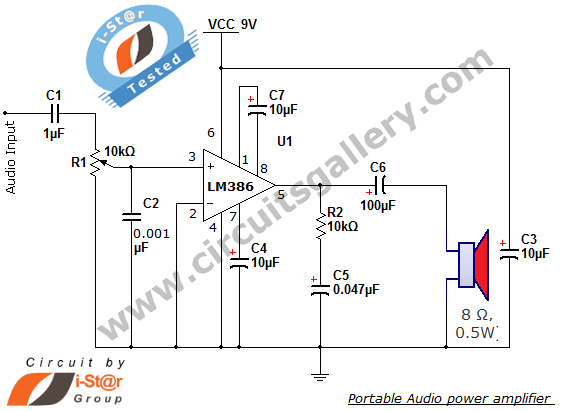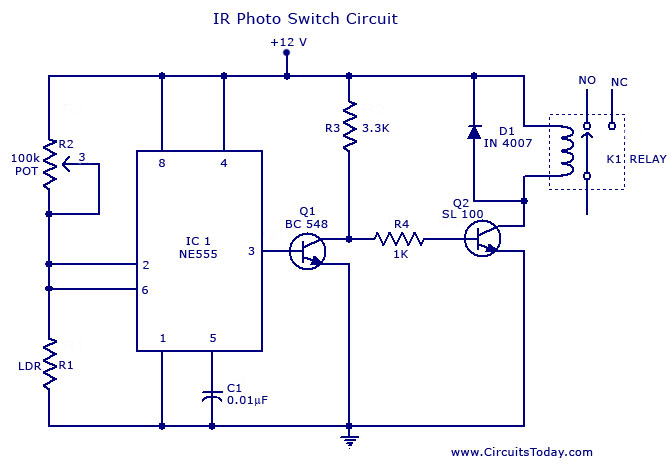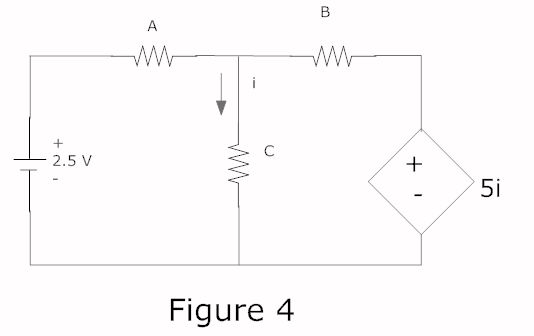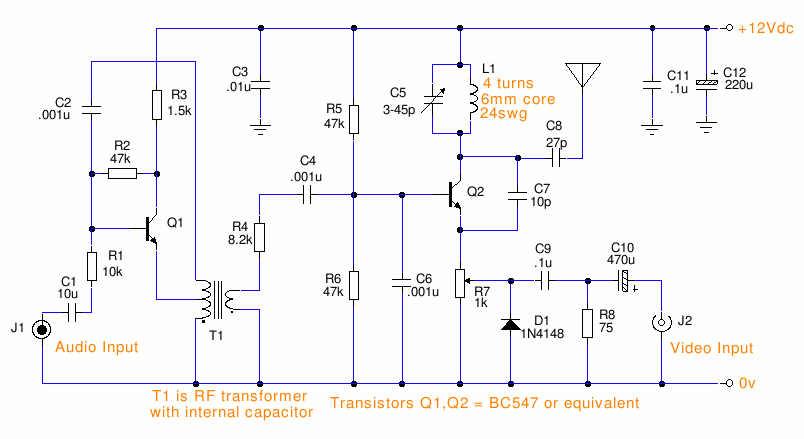
Simple Peak Detector Circuit schematic with explanation

The circuit utilizes a dual operational amplifier integrated circuit (IC), specifically the 1458, which contains two separate op-amps within a single package. In this configuration, the first op-amp functions as a voltage follower, directing its output to charge capacitor C1 through diode D1. Consequently, the voltage to which capacitor C1 charges is equivalent to the peak voltage of the input waveform. The second op-amp within the 1458 acts as a buffer, providing the voltage from the capacitor with minimal loss in charge. A reset switch is incorporated to discharge the capacitor when a new input peak voltage requires detection.
The circuit design effectively employs the 1458 dual operational amplifier to achieve peak voltage detection from an input waveform. The first op-amp, configured as a voltage follower, ensures that the output voltage closely follows the input voltage, allowing for efficient charging of capacitor C1. This configuration is crucial for accurately capturing the peak voltage of the input signal, as the voltage across C1 will reflect this maximum value.
The diode D1 plays a vital role in preventing the discharge of C1 back into the op-amp, ensuring that the capacitor retains its charge after reaching the peak voltage. This characteristic is particularly important in applications where the peak voltage must be maintained for further processing or analysis.
The second op-amp serves as a buffer, isolating the capacitor from the subsequent circuitry. This buffering action minimizes any load effects that could result in voltage drops, thereby preserving the integrity of the voltage stored in C1. This feature is essential for applications requiring precise voltage levels.
The reset switch allows for manual intervention to discharge the capacitor. This functionality is important for applications that need to detect new peak voltages at irregular intervals. By discharging C1, the circuit can be reset and prepared to capture the next peak voltage accurately.
Overall, this circuit design demonstrates an efficient method for peak voltage detection using a dual op-amp configuration, ensuring accurate voltage tracking and minimal signal degradation. The combination of a voltage follower, buffer, and reset mechanism provides a robust solution for various electronic applications requiring peak voltage monitoring.The circuit uses a dual operational amplifier IC, the 1458, which is a single IC package that houses two individual op-amps. In this circuit, the first op-amp is used as a voltage follower whose output is used to charge the capacitor C1 through D1.
As such, the voltage to which capacitor C1 charges up to is the maximum voltage that the input wavef orm reached, i. e. , its peak voltage. The second op-amp of the 1458 is used as a buffer that outputs the capacitor voltage with negligible loss in the capacitor charge. The reset switch is used to discharge the capacitor if a new input peak voltage needs to be detected.
🔗 External reference
The circuit design effectively employs the 1458 dual operational amplifier to achieve peak voltage detection from an input waveform. The first op-amp, configured as a voltage follower, ensures that the output voltage closely follows the input voltage, allowing for efficient charging of capacitor C1. This configuration is crucial for accurately capturing the peak voltage of the input signal, as the voltage across C1 will reflect this maximum value.
The diode D1 plays a vital role in preventing the discharge of C1 back into the op-amp, ensuring that the capacitor retains its charge after reaching the peak voltage. This characteristic is particularly important in applications where the peak voltage must be maintained for further processing or analysis.
The second op-amp serves as a buffer, isolating the capacitor from the subsequent circuitry. This buffering action minimizes any load effects that could result in voltage drops, thereby preserving the integrity of the voltage stored in C1. This feature is essential for applications requiring precise voltage levels.
The reset switch allows for manual intervention to discharge the capacitor. This functionality is important for applications that need to detect new peak voltages at irregular intervals. By discharging C1, the circuit can be reset and prepared to capture the next peak voltage accurately.
Overall, this circuit design demonstrates an efficient method for peak voltage detection using a dual op-amp configuration, ensuring accurate voltage tracking and minimal signal degradation. The combination of a voltage follower, buffer, and reset mechanism provides a robust solution for various electronic applications requiring peak voltage monitoring.The circuit uses a dual operational amplifier IC, the 1458, which is a single IC package that houses two individual op-amps. In this circuit, the first op-amp is used as a voltage follower whose output is used to charge the capacitor C1 through D1.
As such, the voltage to which capacitor C1 charges up to is the maximum voltage that the input wavef orm reached, i. e. , its peak voltage. The second op-amp of the 1458 is used as a buffer that outputs the capacitor voltage with negligible loss in the capacitor charge. The reset switch is used to discharge the capacitor if a new input peak voltage needs to be detected.
🔗 External reference





